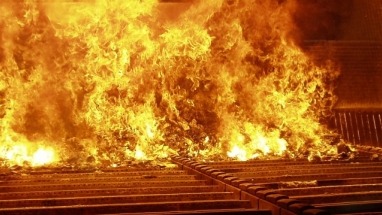1000 Solutions - June 6, 2019
Greenrail, turning railways into clean energy producers


Written by Tristan Lebleu 3 min read
This solution uses a new process and technology to make sleepers more efficient, reduce waste and create clean energy
While innovation, design and technology has transformed most industries and objects of our everyday lives, a few things have kept unchanged in centuries. In the train industry, concrete railway sleepers have stayed pretty much the same since they were first introduced at the start of the 20th century… Until now?
In 2005, Giovanni De Lisi, an Italian railway maintenance and installation worker had an idea that could change the entire industry’s standard, introduce circular economy and transition the industry to carbon neutrality.
Greenrail, a Milan-based startup, produces sleepers made up of concrete, and a mix of recycled plastic and rubber from ELT (End of Life Tires). Through its circular economy process, every kilometer of railway line made by Greenrail allows recycling of 35 tons of plastic and used tires.
The innovative sleepers lower maintenance costs by up to 50% as “the plastic and recycled rubber cover helps to reduce the grinding of the track ballast, to absorb vibrations, curb the rails’ lateral displacement, and bolster the load capacity by 40 percent” explained Greenrail founder and chief executive De Lisi in an interview with EJinsight.
Even though these characteristics would suffice to make Greenrail ties interesting, another idea from De Lisi turn them into a true revolution: the Italian founder decided to turn this passive object into an energy producing infrastructure.
Greenrail Solar integrates solar panels which turn railway infrastructures into a photovoltaic field, and Greenrail Piezo uses a piezoelectric system to generate electricity during a train’s passage. A third version, Greenrail Linkbox sends data to make real-time diagnostics, and improve safety and predictive maintenance of railways.
Each kilometer of Greenrail’s solar sleepers can produce 35 MWh per kilometer, enough power to sustain 10 households’ annual electricity needs. Considering there are approximately 380 million concrete sleepers in Europe alone, the potential could be huge.
While the company has started expanding in high-potential markets such as the US, India, Australia, Brazil, Russia, Uganda and Kazakhstan, it inaugurated in September 2018 its first pilot stretch of smart railway sleepers on the Reggio Emilia – Sassuolo line, in Italy.
“Greenrail aims at technologically advanced innovation, linked to sustainability and the results achieved in this experimental stretch demonstrate that development and modernization of the railway infrastructure in a sustainable and innovative way is possible and will be the priority for country’s development. A sustainable mobility cannot leave aside technologically renovated railway infrastructure” said De Lisi at the line inauguration.

Written by Tristan Lebleu on June 6, 2019


